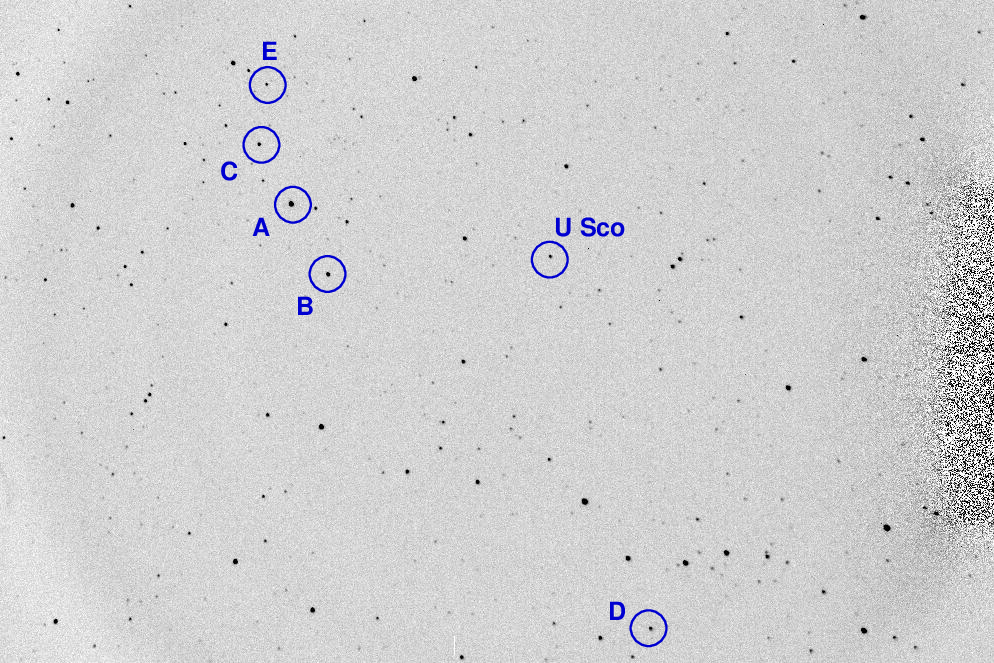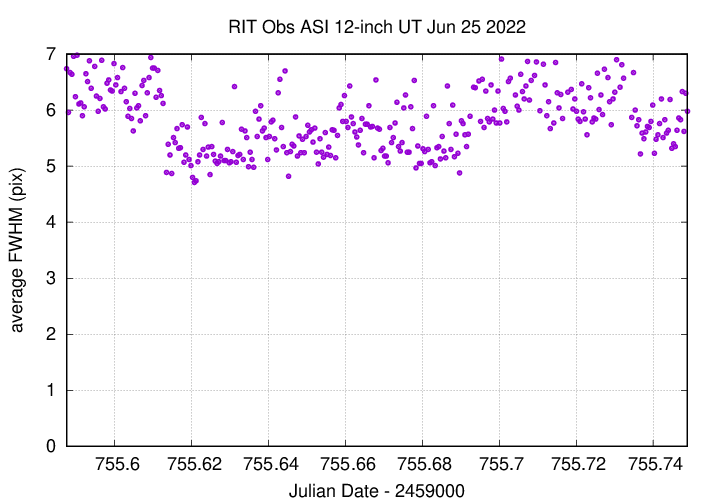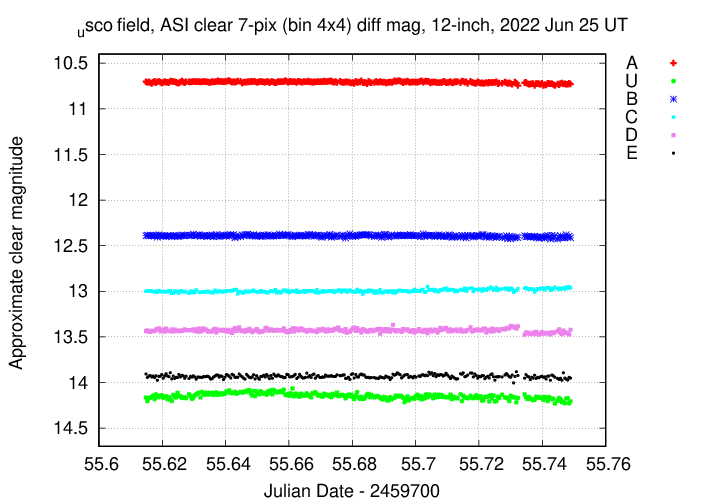
On the night of Jun 24/25, 2022, under very good conditions, I acquired images of the outbursting cataclysmic variable star U Sco.
Tonight's observations were made on the 12-inch telescope, as usual, but with the new ASI camera. The results look a bit better than those made last night with the ATIK camera. Hooray!
I switch to taking images of V1674 Her = Nova Her 2021 after U Sco set. The data wasn't really good enough to submit to AAVSO or other repositories, because the target, at roughly V = 17.1, is too faint for this setup. That's certainly true with an exposure time of 30 seconds; perhaps 60 seconds is long enough, but I think even longer exposures would be necessary.
U Sco is a cataclysmic variable which only rarely is caught in an outburst. This one was first noticed at UT 2022 June 6.720 by Masayuki Moriyama. The star reached a peak brightness of about V = 8, but faded quite a bit by this evening; it is currently about V = 14.
The main setup was:
Notes from the night:

The object is located at
RA = 16:22:30.78 Dec = -17:52:42.8 (J2000)
A chart of the field is shown below. The size of the chart is about 42 x 30 arcminutes.

I've marked the location of several comparison stars as well, which appear on the AAVSO chart of comparison stars.
I'll use star "A" to shift my instrumental magnitudes to the V-band scale.
I took a photo of the finder TV's screen when pointing to this target; this could be a useful reference for the future:

The sky value shows no sign of clouds. The drop near the start is when I switched from 3x3 to 4x4 binning.

The FWHM graph below shows a rise as the temperature dropped by 7 degrees C, then a decline when I re-focused.

Using aperture photometry with a radius of 7 pixels in clear filter (binned 4x4, each pixel is 1.052 arcsec, so a radius of 7.4 arcsec), I measured the instrumental magnitudes of a number of reference stars and the target. Following the procedures outlined by Kent Honeycutt's article on inhomogeneous ensemble photometry, I used all stars available in each image to define a reference frame, and measured each star against this frame.
Sigma-vs-mag plots show that the floor was about 0.009 mag, about the same as with ATIK.

The change in zeropoint shows the effects of high airmass near the end.

The measurements show a slight waviness.

You can download my measurements below. A copy of the header of the file is shown to explain the format.
# Measurements of U_Sco made at RIT Obs, UT 2022 Jun 25, # in very good conditions, # by Michael Richmond, # using Meade 12-inch LX200 and ASI 6200MM. # Exposures 30 seconds long, clear filter. # Tabulated times are midexposure (FITS header time - half exposure length) # and accurate only to +/- 1 second (??). # 'mag' is a differential magnitude based on ensemble photometry # using a circular aperture of radius 7 pix = 7.4 arcseconds. # which has been shifted so AAVSO 000-BBX-431 has mag=10.707 # which is its V-band magnitude according to AAVSO. # # UT_day JD HJD mag uncert Jun25.11483 2459755.61483 2459755.62008 14.165 0.024 Jun25.11528 2459755.61528 2459755.62053 14.203 0.024 Jun25.11574 2459755.61574 2459755.62099 14.173 0.024
Last modified 6/26/2022 by MWR.